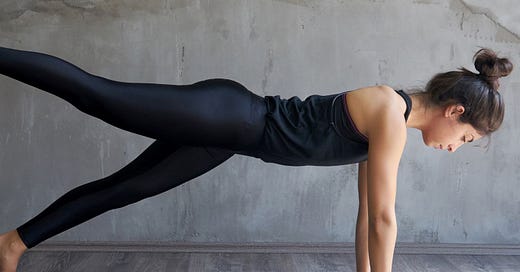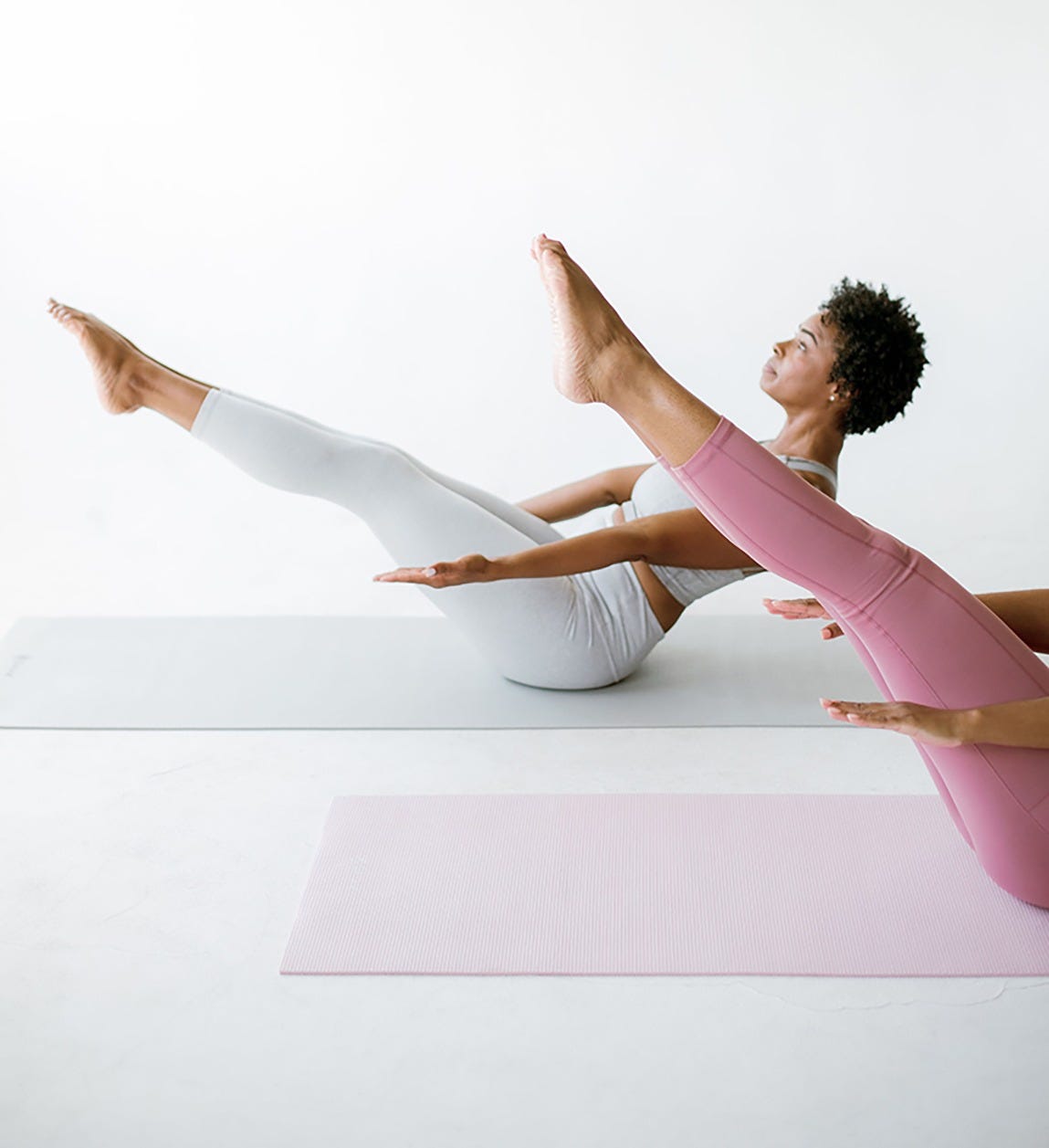Pilates vs. strength training
Which is better for our bodies?
Fitness, like fashion, has its fads that come and go. From the Jazzercize craze of the 1970s to step aerobics, spin classes, Zumba, CrossFit, and yoga, almost every decade has had a workout trend that defined it.
Fast-forward to today, and Pilates is having a major moment. According to Class Pass, Pilates was the top fitness trend for 2023 and 2024, and it doesn’t show any signs of slowing down in 2025. Women (and men) are turning to the low-impact, high-intensity workout for lengthening, strengthening, tightening, and toning muscles while improving posture, flexibility, and balance. However, some experts caution that Pilates is no substitute for good old-fashioned strength training when it comes to preventing the loss of muscle mass and bone density that occurs with aging. Middle-aged women, in particular, are encouraged to get off the Reformer and get into the weight room if they want to offset the changes that occur during the pre- and post-menopausal years.
As someone who teaches multiple fitness disciplines, including traditional strength training and Reformer Pilates, I believe that anything that gets you off the couch and gets you moving is a good thing. I also believe that there is no one-size-fits-all approach to fitness, and that you can — and should — incorporate multiple activities that you enjoy. However, when people ask me if Pilates “counts” as strength training, my answer is “yes, sort of, but not exactly.”
What is strength training?
To understand the trending “lifting vs Pilates debate,” it is important to understand what we’re talking about when we talk about strength training. Traditionally, effective strength training involves lifting heavy weights and pushing the muscles to the point of failure. Progressive overload, through the increase of weight or reps, prevents plateaus and generates muscle growth by forcing the body to adapt to the increasing demands being placed on it.
The result is not only an increase in muscle mass, but also in bone density. Why does that matter? Because women become more susceptible to osteoporosis after menopause, thanks to the loss of estrogen. In fact, according to the BHOF (Bone Health and Osteoporosis Foundation), a whopping 80% of the estimated 10 million Americans dealing with osteoporosis are women. Couple weak, brittle bones with a lack of muscle strength, and the risk for falls and injuries increases significantly.
According to May Al-Araji, MBChB, a women’s health and family medicine expert at Mayo Clinic Healthcare in London, if you aren’t strength training by middle age, there’s no better time to start.
“Weight-resistance exercises are really key for bone health,” says Dr. Al-Araji, who cautions newbies to start slow to avoid injury. “It’s all about resistance. You build it up gradually.”
“But I use resistance of the Reformer,” you say. “Why doesn’t that count?” Well, again, it does, but not exactly.
The power of Pilates
Instagram and TikTok feeds are filled with tight, toned, young women wearing matching Alo sets, and clutching an Owala bottle on their way to the Pilates studio. But while the whole #pilatesprincess vibe may be partly to blame for the pushback, the truth is that Pilates is not an easy workout. But don’t take my word for it. Google #mendoingpilates and watch videos of male athletes and bodybuilders struggling to stay in a carriage lunge for two minutes.
The main difference between strength training in the gym and using a Pilates Reformer is time under tension. Both require you to move against resistance, but where traditional strength training focuses on the contraction (concentric motion) of the muscle, Pilates focuses on the extension (eccentric motion). Each Pilates move is performed as slowly as possible. The shakes that result from that movement are more about muscle endurance fatigue than muscle failure. That’s not to say you aren’t building strength, but it’s a different type of strength that tends to be core-focused and more functional than powerful.
‘It was time to bring forth my desire to be in a relationship with a woman’
An excerpt of Midlife Emergence: Free Your Inner Fire by Jen Berlingo, MA, LPC, ATR
The year I was forty-one years old, I sensed a shift in my being. It was as though a tectonic process had taken over my solid, internal landscape, moving the plates of my identity enough to expose peeks at my molten core. Much like a dormant volcano, from the outside my life appeared stable, peaceful, and lush, but a fiery magma brewed deep within, yearning to see the light of day. I had kept this inner fire bound, as I was terrified of its capacity to obliterate my entire village.
At the time, I lived what many would consider to be a pretty sweet life. I was several years into working in my private psychotherapy practice in the San Francisco Bay Area. I lived in a sprawling, California ranch home with one of those large, trendy swan rafts floating in our backyard pool. Our inflatable swan was named Juno, after the Greek goddess of marriage. I was nestled into this life alongside my loving, generous, devoted husband, Craig, to whom I’d been married for fourteen years, our vibrant ten-year-old child, and two chatty, snuggly cats. I’d swat away dissatisfaction whenever it crept into my psyche, berating myself for not feeling grateful enough for this exquisite life.
One spring day, while sitting salt-water-face to salt-water-face with Momma Ocean, listening to Ani DiFranco croon on my car stereo, I felt something hot start to crack my inner walls. For the past several months, I had become unbearably restless and inflamed, figuratively and literally, but I feared looking too deeply underneath because it might mean I would have to muster enough bravery to completely change my exquisitely beautiful life. In a prayer for courage, I breathed in the ocean air, trying to infuse my being with her powerful, feminine energy. I finally allowed silent sentences to escape the pit in my stomach and burn their way up through my heart and throat until I heard the words finally form in my mind. I whispered my secrets to the ocean because I knew she could hold them until I could set them all free. I confessed to her that it was time to bring forth my lifelong, unfulfilled desire to be in an intimate relationship with a woman. What was more difficult to (un)swallow was that the particular woman occupying my heart at the time was my best friend.










